What is the National Data Analytics Platform and Why is it Important ?
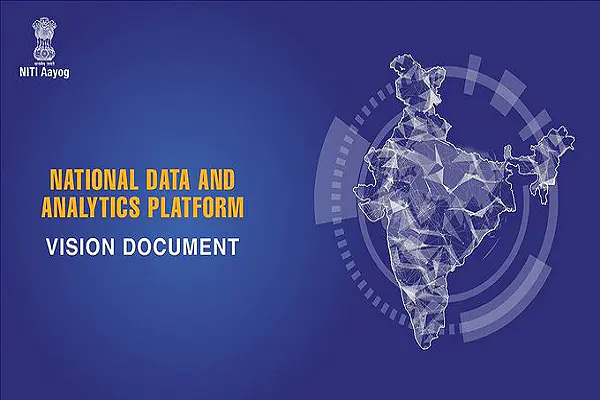

On May 14 2022, NITI Aayog, the planning and think-tank arm of the Government of India, announced the public launch of its open data platform, titled the “National Data Analytics Platform” or NDAP. This platform has been a major effort in the government’s efforts to promote a new culture of data democratization, transparency and accountability and to provide free public access to national datasets. Among the platform’s crucial features include user-interactivity, dataset-interoperability and mass-accessibility. The platform also provides crucial aid to developers, journalists, researchers and other stakeholders to access the information contained, through data-visualization features provided by the platform. The datasets provided by the platform have been sourced from various ministries , departments and agencies of the Government of India and have been suitably tailored to the needs of the researchers, and other stakeholders that would be interested in utilizing the information.
I took the liberty of signing up on the NDAP platform and decided to explore it for myself. My first takeaway of the platform was that it was a stunning example of GoI’s commitment to Digital India and the new StartUp India Initiative. The aesthetics of the platform are sleek, smooth and extremely user-friendly. In fact, the government, keeping in mind its commitment to the differently-abled sections of Indian society, has also provided the feature of a screen-reader to help differently-abled users navigate through the website. The website is available in 22 Indian languages in addition to English keeping in mind India’s linguistic diversity.
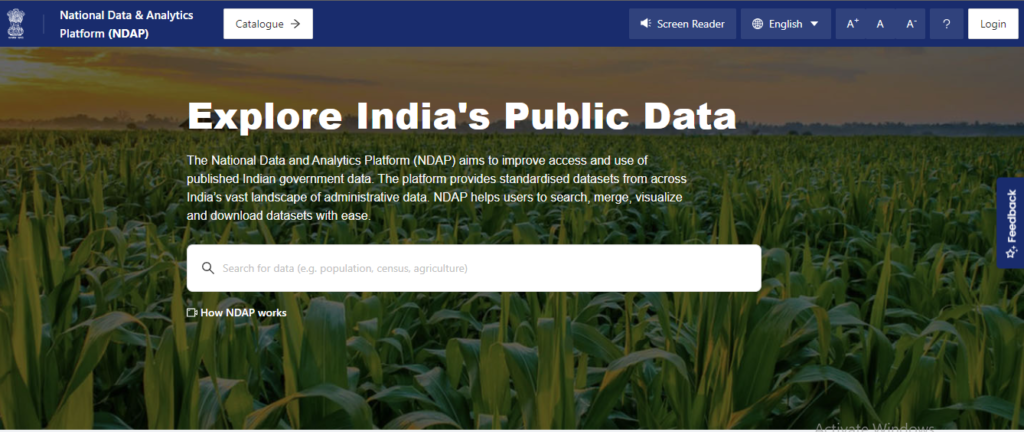
The datasets are organized by sectors and ministries and are also indexed by their viewing statistics and recency of addition to the platform. The platform provides a data catalog and a natural language search feature that allows us to search for datasets as per the requirements. It also provides us with filters that would allow us to narrow down our search to the requirement criteria – time period, frequency, the granularity of the data point, the ministries and the sectors.
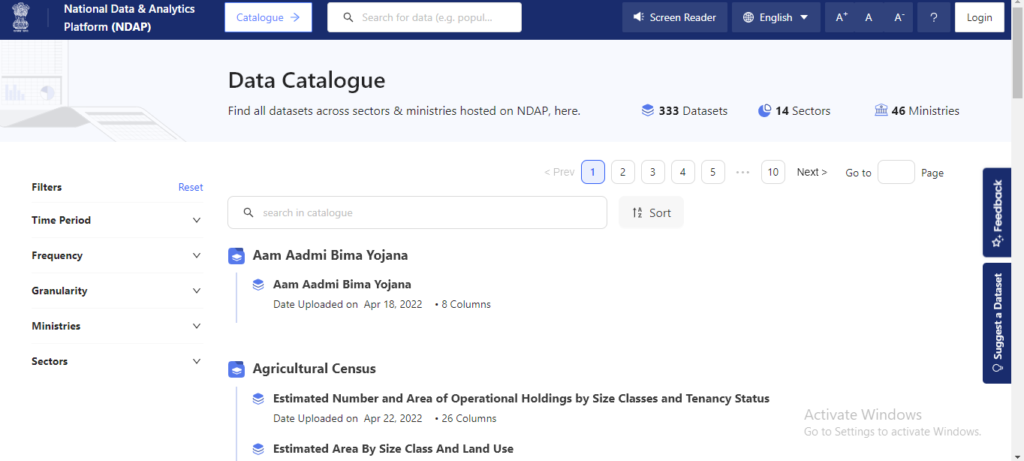
The datasets contained are hosted on the platform in a clean, machine-readable format like pdf, csv etc., and the platform ensures data interoperability by mapping the datasets to a common set of geographical and temporal dimensions. We can download the entire dataset from the platform, including source data, metadata, NDAP Process Data and waiting keys. The Merge function provides interoperability of the dataset by mapping it to local government directory, helping us to perform cross-sectoral analysis of multiple datasets.

By using the data table option, we can choose the columns required for our analysis from the dataset, as well as filter as per our conditions and also create a pivot table for the same purposes.
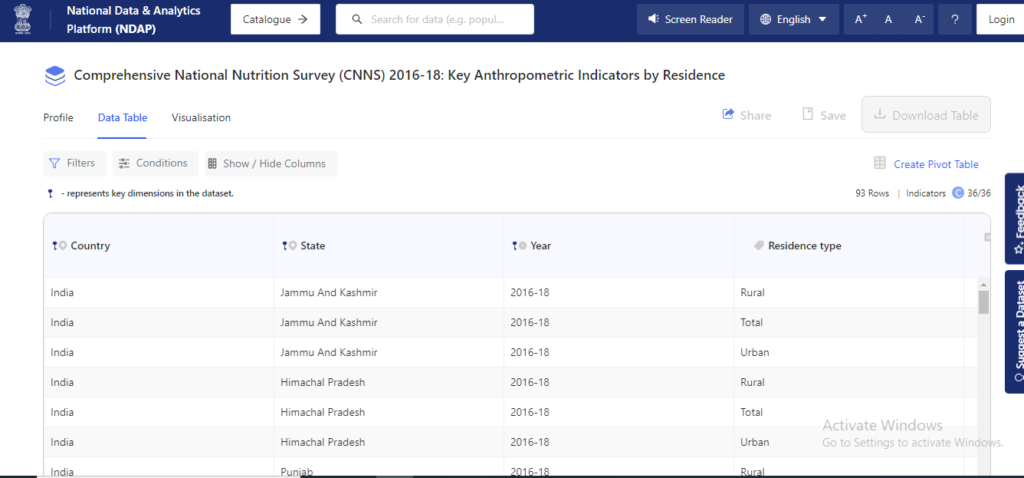
By subscribing to the dataset, we can also keep ourselves abreast of the latest updates in the dataset as NDAP continuously updates it with the latest information.
Multiple downloadable visualizations are available for the datasets, such as line chart, column chart, pie chart, bubble chart, scatter-chart etc. Choosing a visualization option, will automatically throw up dialog boxes for the relevant features to be selected from, ensuring coherence and reduced effort in the creation of the visualizations. The visualizations are also interactive, as we can click on the data points to obtain further information about the graphic.
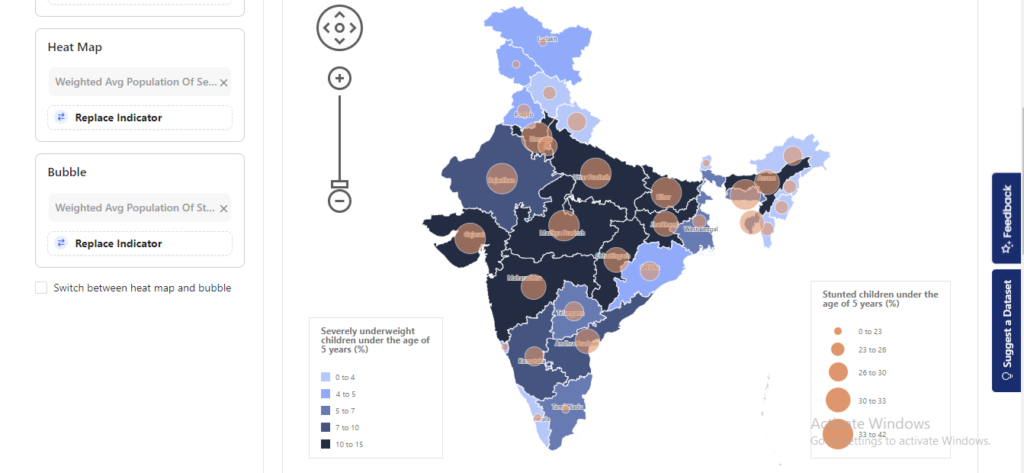
The platform also contains very comprehensive tutorials about itself and how to use it to its maximum potential, which would be very useful especially for students, researchers and data journalists, looking to utilize this platform to its fullest potential.
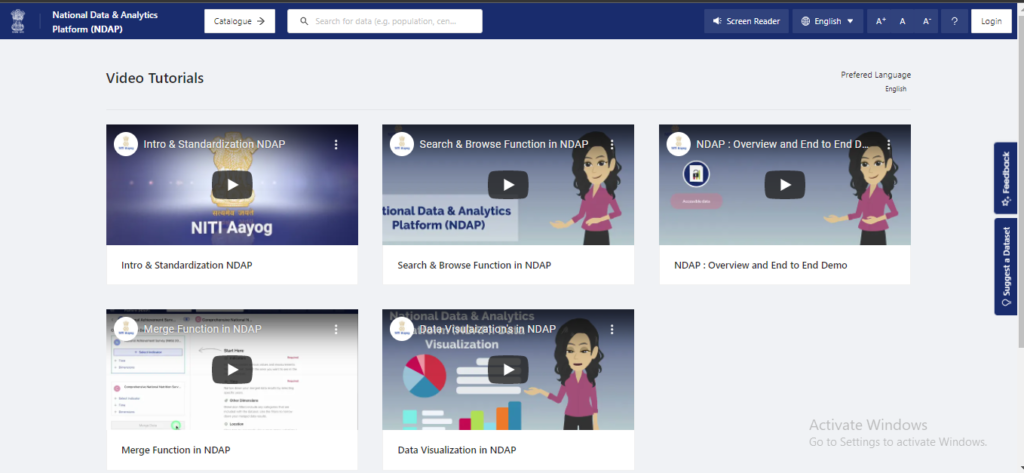
In case of a missing dataset, or a requirement or need that remains unfulfilled on the platform, the platform has detailed feedback functionality, querying us about the specific issue and broader category of issues that we feel it falls in. This is unprecedented in the history of both open-source-data and also, in Indian governance, where transparency and openness-to-feedback have never been as prioritized as today.

Overall, the National Data Analytics Platform (NDAP) marks a landmark achievement of the NITI Aayog and the Government of India. In keeping with their goals of Digital India, StartUp India and Make In India, NDAP will prove to be a major milestone in the history of data governance and utilization in history and will serve as a benchmark of excellence and best practices in the years to come.
DISCLAIMER: The author is solely responsible for the views expressed in this article. The author carries the responsibility for citing and/or licensing of images utilized within the text.
